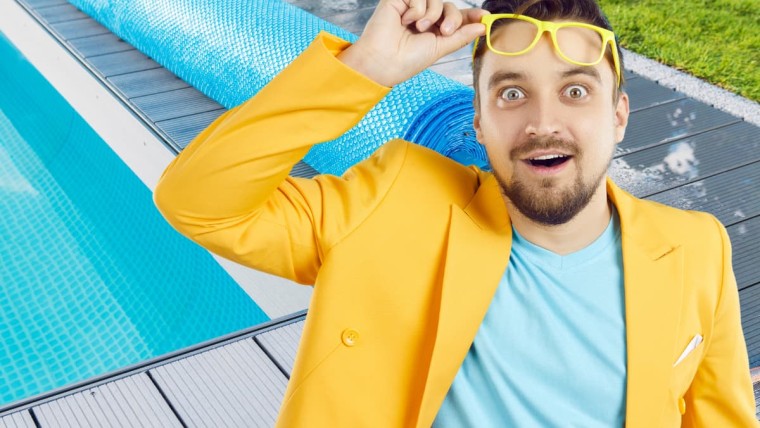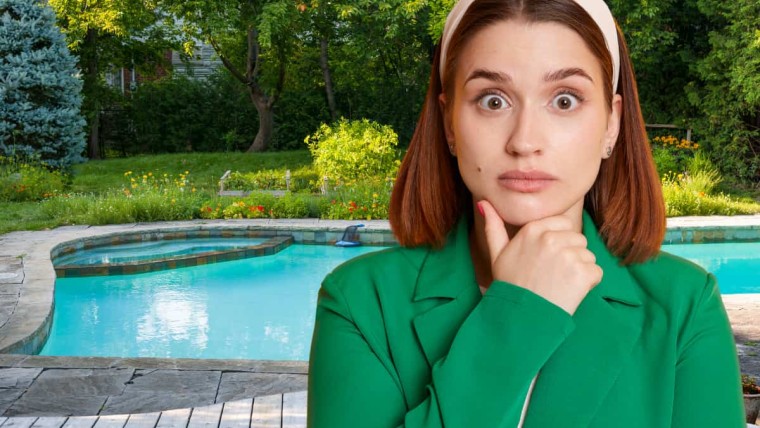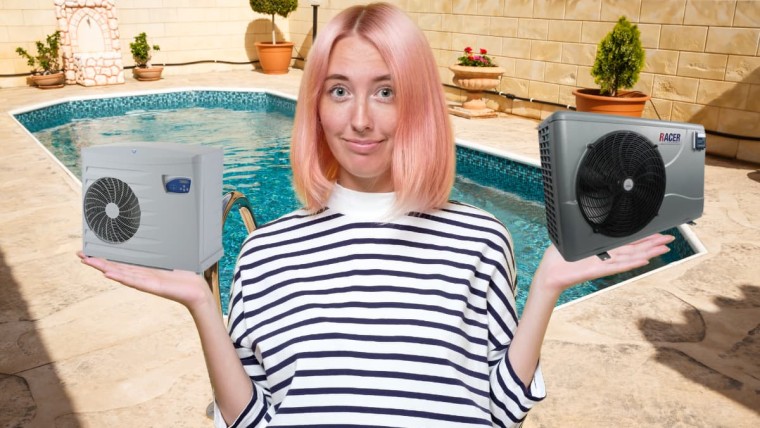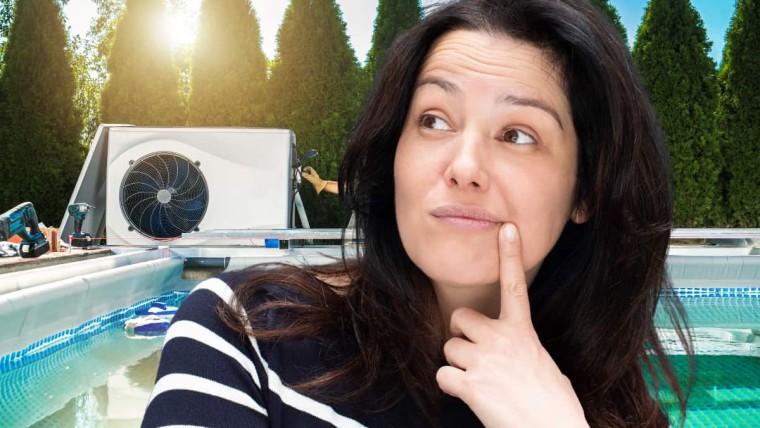Atlantic, a Vendée-based brand since 1968, emphasizes a strong French identity and a marked interest in local production (Made in France). The brand has 13 sites (factories) spread over the French territory, mainly on the Lille-Paris axis, as well as in the Grand-Est, Rhône-Alpes, and of course in the Vendée.
Atlantic wants to be an innovative brand, and registers dozens of patents per year. Indeed, with about 250 people working in R&D at Atlantic, there is plenty of grey matter to innovate. It evolves with the French market of thermal comfort. Starting with water convectors, it moved on to electric radiators, for which it is omnipresent in France, then to oil-fired boilers towards the end of the 1990s, and finally to heat pumps since 2008, with a host of models available.
If you want a quote for an Atlantic Alfea Extensa Duo => You can ask our partners, France, Belgium or Switzerlandvia this small form
This brand is not specialized in heat pumps but in absolutely all types of heating systems, but also in ventilation and air conditioning. Whether on the market of individual or collective housing or for offices, Atlantic is present for new buildings as well as for renovation.
Here, we are going to focus on the Atlantic Alféa Extensa Duo A.I. model (R32 or not). A name with extensions that we will detail and on which we will give an opinion.
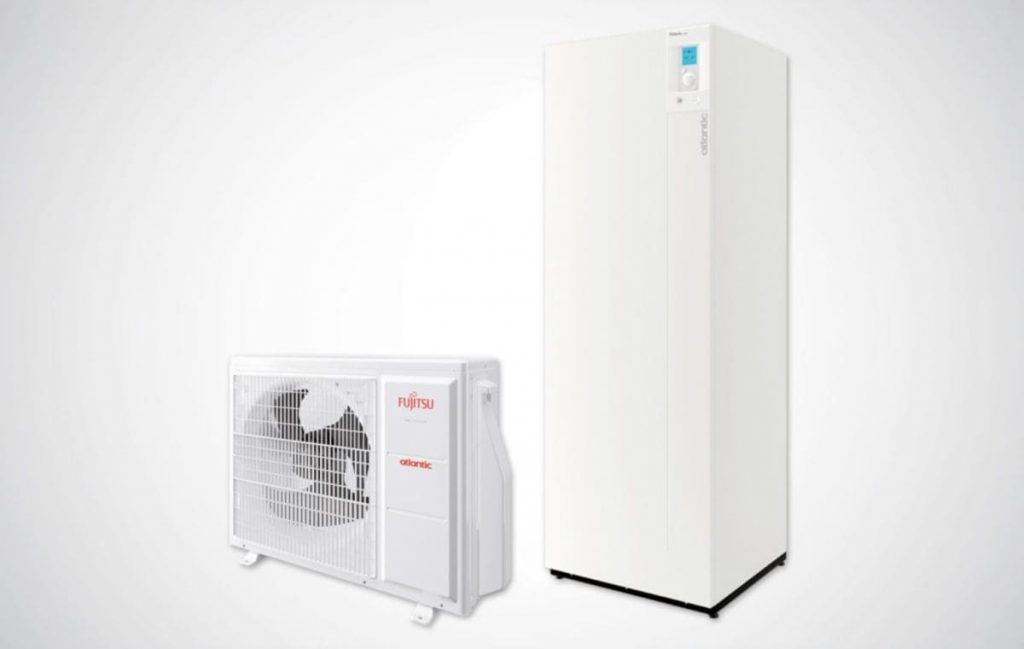
Atlantic being a French manufacturer, the majority of these PAC Alféa Extensa Duo AI are present on the French market. But Atlantic is a large company, and is therefore present in several European countries including Belgium, Poland, Bulgaria and Italy, but also as far as Moscow and further afield in Vietnam.
The Alféa Extensa Duo A.I. is an Air / Water Split Inverter heat pump with an integrated domestic hot water tank (DHW). This means that it takes the calories from the outside air, and redistributes them to the hot water network of the house (in radiators or underfloor heating). Split means that there is a separation between the unit that collects the calories from the outside air (outdoor unit) and the unit that redistributes them to the water network of the house (indoor unit, or hydraulic module).
Split is the opposite of "Monobloc", and there is a refrigerant connection between the indoor unit and the outdoor unit. Finally, the word "Inverter" indicates that the compressor works in an adaptive way, according to the heating needs, it modulates its power, which allows to consume less electricity.
Finally, the mention Duo means that in this model the hot water tank is integrated. That's why the inner module is so big. If it is not Duo, then it is heating only, so the inner module is much smaller (only 847mm high) because you have to provide the hot water tank yourself in this case.
We also notice that on the external group is written Atlantic Fujitsu or even Fujitsu Atlantic. Why? Well, since January 1st 2020, the Atlantic group has become the exclusive distributor of the Japanese giant Fujitsu (more exactly of a brand of this group: General). So Atlantic manufactures in France, but as far as external groups are concerned, they rely on a big name in the field, which supplies the whole planet.
Aesthetics
- The appearance is uncluttered. The white color allows a good integration in a modern environment. The outdoor unit is not really beautiful, like most others. It is the wart that needs to be hidden in the front, behind a bush, a wall or a heat pump cover.
- There is an effort on the interior group whose line seems quite modern, although it does not really matter if it is in a technical room or in the garage.
Performance
This split Inverter heat pump with integrated DHW (Duo) is available in 4 different models, or 4 heating capacities. The 4 models work with the R410A refrigerant, which is very common in heat pumps. This last fluid R410A will be forbidden from January 1st, 2025 in the installations of less than 3kg of load in refrigerant. It is another fluid, the R32, which is gradually replacing it, and as we will see Atlantic is on the spot :), since 2017.
The Alféa Extensa Duo A.I. 5
The smallest model of the range provides on paper a power of 4.5kW with a COP of 4.52, all for an outdoor air temperature of +7°C (slightly higher than the annual average) and a water outlet temperature of 35°C, thus for underfloor heating.
This might be a bit tight for a 100m2 house for example, unless the house is new, but for a slightly smaller area or a 65m2 apartment for example, it might be ok. At -7°C in the outside air, 35°C in the floor the power drops from 10% to 4.1kW and a COP of 2.79.
If we look at the power developed in an extreme case, -7°C in the outside air, and +55°C in the radiators, then we fall to 3.70 kW with a COP of 1.68, which means that you produce 1.68kWh of heating energy per kWh consumed.
The Alféa Extensa Duo A.I. 6
This is the second model, only slightly more powerful than the first, so it is quite similar. Depending on your heating power calculation, you may have to select this one. The power -7 / 35°C is 4.6kW for a COP of 2.64.. But for radiators and in the extreme winter case, we will have a power hardly higher than the model 5, that is to say 3,85kW and a COP of 1.65.
The power gain compared to the Extensa Duo AI 5 is only relevant in low temperature, and only 10% is gained, while the power input (electricity consumed) increases by 20%.
The Alféa Extensa Duo A.I. 8
For this third model, nothing new except the power, the COP and the consumption which change. The heat pump is made to deliver 5.7 kW at -7/35°C, with a COP of 2.56. Let's not forget that the temperature of -7°C is very theoretical. Of course it happens often to have -7°C in some regions of France, Switzerland or Belgium, but it is rare if we relate it to the rest of the year. On average, even in the coldest regions, the average temperature is rarely below +7°C. On average over the year, the data at +7/35°C for underfloor heating is therefore relevant: that is to say 7.5kW and a COP of 4.08.
The Alféa Extensa Duo A.I. 10
For the biggest model of the Alféa Extensa DUO AI range, we have a power of 7.4kW at -7/35°C and a COP of 2.49 so even in the middle of winter you will consume 2.5 times less than with a pure electric radiator. And roughly over the year you will have a COP of 4. 4kWh created for 1 kWh consumed. In the middle of winter, on old radiators, it will not be at the top with a COP of 1.69.
Each of these models can be delivered with an electric booster, to ensure if the temperature falls too low and the power delivered by the machine is not enough. For example, if you install the 10 in your house, on 55°C radiators, and that your need in heating power is 9kW, then if it is -7°C outside, you will miss 2kW to satisfy your need in heating. This is when the heater comes into play. But be careful with its regulation, check how it works, how your installer regulates it. Indeed, more than once we have seen resistances that were running all year long without the owner knowing it, until the day he receives his electricity bill and wonders.
Here is a table that recalls all the powers and COP, for underfloor heating or old radiators
| Split Inverter R410A | Alféa Extensa Duo A.I. 5 | Alféa Extensa Duo A.I. 6 | Alféa Extensa Duo A.I. 8 | Alféa Extensa Duo A.I. 10 |
| Power kW (-7/35°C) for underfloor heating [COP]. | 4.10 [2.79] | 4.60 [2.64] | 5.70 [2.56] | 7.40 [2.49] |
| Power kW (+7/35°C) for underfloor heating [COP]. | 4.50 [4.52] | 6.00 [4.26] | 7.50 [4.08] | 10.00 [4.02] |
| Power kW (-7/55°C) for old radiators [COP]. | 3.70 [1.68] | 3.85 [1.65] | 5.20 [1.56] | 7.00 [1.69] |
As mentioned above, R410A will soon be banned on new installations with less than 3kg of refrigerant charge, and this on January 1st 2025. This concerns these Alféa Extensa Duo A.I. units because their R410A fluid charge is around 1kg.
There is already the Alféa Extensa Duo A.I. R32 range which uses R32:
R32 has a GWP (Global Warming Potential) 3 times lower than R410A, which makes it a more ecological gas that contributes less to the greenhouse effect. The properties of the gas are virtually the same as R410A. Although R32 is known to be slightly more flammable than R410A, all this is taken into account by Atlantic's R&D teams.
Let's see how the table changes, if we take the model with R32 :
| Split Inverter R32 | Alféa Extensa Duo A.I. 5 | Alféa Extensa Duo A.I. 6 | Alféa Extensa Duo A.I. 8 | Alféa Extensa Duo A.I. 10 |
| Power kW (-7/35°C) for underfloor heating [COP]. | 4.40 [2.76] | 5.00 [2.63] | 5.70 [2.68] | 8.90 [2.65] |
| Power kW (+7/35°C) for underfloor heating [COP]. | 4.50 [4.74] | 5.50 [4.65] | 7.50 [4.43] | 9.50 [4.50] |
| Power kW (-7/55°C) for old radiators [COP]. | 3.90 [1.85] | 4.25 [1.89] | 5.3 [1.90] | 8 [1.95] |
We note that the COPs are 5 to 10% higher than for R410A, which suggests a lower power consumption for equivalent power developed by the heat pump.
NB: in R32 there is a 5th model of size 3 for the smallest powers: 3.3kW A7/W35.
Acoustics
Concerning the noise of the Alféa Extensa Duo A.I R410A or R32 we are respectively on 39dBA and 32dBA for the indoor module, which is low and will not be heard much. This is normal, there is not much noise in it. Indeed, the compressor or the fan are in the unit outside.
For the outdoor unit, the classic R410A version gives 41dBA for the two smallest models AI5 and AI8, and 47dBA for the two biggest models AI8 and AI10. 47dBA at 5m from the emission point (machine) and at 1.5m from the ground, and this considering that the heat pump is installed on a plot of land, in a garden for example. In frontage one would have more to case of the reverberation.
We cannot say that these values are OK for your particular case. Indeed, it depends on the area of residence, and the distance at which you want to place the heat pump compared to the first window of the neighbor. The law and in particular in France theArticle R.1336-7 of the public health codeThe French law considers that a noise is legal if its "emergence" in relation to the ambient noise does not exceed a certain number of decibels. Namely 5 dBA during the day, and 3dBA at night. Attention: if your installer tells you that it is up to standards or any other banality, you are not safe from a lawsuit from your neighbor if it is too much for him or if he is annoying, and you will need an acoustic expertise in this case. So plan to put it as far away from the neighbor as possible.
The Alféa Extensa Duo AI R32 model is quieter since it presents a sound pressure at 5m of 35dBA for the smallest models, up to 40dBA for the biggest. This is still 7dBA less on paper.
Summary table for noise
| Outdoor module | Alfea Extensa Duo AI R410A | Alfea Extensa Duo AI R32 |
| Sound pressure at 5m, 1.5m from the ground, in free field (garden) | 41 to 47dBA depending on model (5 to 10) | 35 to 40dBA depending on model (3 to 10) |
| Interior module | Alfea Extensa Duo AI R410A | Alfea Extensa Duo AI R32 |
| Sound pressure at 1mat 1.5m from the ground, in the field free (middle of a room) | 39dBA | 32 to 34dBA depending on model (3 à 10) |
Some notable technical features
The DHW tank has a water capacity of 190L, which is very good for a family of 4 or 5.
Fujitsu uses the DC Twin Rotary compressor which is able to modulate its power according to the load.
Atlantic uses one of its inventions in this heat pump model, namely the coaxial exchanger, which is placed in a buffer volume within the indoor module. But what is the coaxial exchanger?
When the refrigerant has to give back its calories to the water of the domestic network, it cannot of course be in contact with the water otherwise it would pollute it. It is therefore necessary to pass through an exchanger. On one side the refrigerant arrives, and on the other the water, and through the wall we have the heat exchange.
Usually this is done through a plate heat exchanger, a classic heat exchange system. It looks like this:
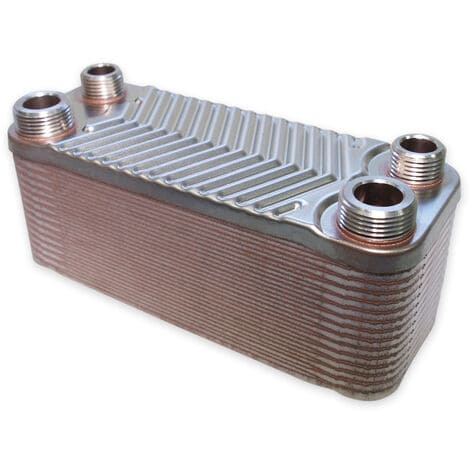
The disadvantage of the plate heat exchanger is that it has very little tolerance for impurities in the water. Every heating system is naturally impure. Sludge forms naturally due to suspended particles and oxidation.
The Atlantic coaxial exchanger (patented) is much less sensitive to impurities and will clog much less, if at all, than the plate exchanger.
In addition, Atlantic integrates its electric booster in this buffer volume, it slides on the vertical axis in a practical way. Here is a video that explains the key concept of this heat pump.
The price of an Atlantic Alféa Extensa Duo A.I. (R32)
The price of this heat pump, or installation, is between 6'000 and 10'000€.
You can find it everywhere:
- On ManoMano in size 10
- On the Comptoir des Energies in size 5
- And even at EDF in size 5, 6 or 8, with a bonus installation estimate
If you decide to buy it yourself, opt for the more modern and efficient R32 model.
A heat pump installation can cost you between €5000 and €15000 or more. It all depends on your region, and the claims of your installer.
Regulation
Of course, with all the engineers at Atlantic, you are entitled to the latest fashion in heat pump regulation. EASY Start function that allows you to start quickly with lightning parameterization of the heat pump.
Remote control with smartphone or other thanks to an app. The heat pump is connected via Cozytouch to Wifi. Be careful not to be hacked into your local network, at the risk of being too hot or too cold!
Visualization of the consumption room by room to know which is the smart guy who forgets to close his windows in the middle of winter.
Look at this perfect couple so happy thanks to Cozytouch (ok I'm doing too much lol)
Footprint
Interior module: The interior block is similar to a refrigerator. 1.86m height and about 650 * 650mm width depth. It is placed in an unused corner or the corner of a technical room.
As for the external unit, it is 900mm wide for the small models and 632mm high. And thus fits well under a window for example. The intermediate model is higher with 710mm and the biggest power will require a height of about 1m. Without counting possible anti-vibration feet, also called big foot.

SEE ALFEA EXTENSA DUO AI R410A DATA SHEET
SEE ALFEA EXTENSA DUO AI R32 DATA SHEET
Overall on the Atlantic Alféa Extensa Duo AI R410A or R32 (always longer the name) :
Atlantic is a French heating giant that presents a well thought out model with innovation thanks to the coaxial exchanger of their own making, combined with the thermal auxiliary in a very compact way. Moreover, the Alféa Extensa Duo is evolving with the legislation on refrigerant gases since a range in R32 now exists, which is a good sign for the life of this range in time: the will to continue on this machine in the future is present. It is a model very present everywhere in France, and consequently of many installers of which yours necessarily already had business there and know the breakdowns and know how to repair them quickly.
The performance and in particular the COP is good in R410A and even better in R32 (+10% approximately), which makes it a very probably economic machine. It all depends on how it is installed and what it is connected to.
Beware of the acoustic level, on the largest models, the noise of the original Fujitsu group could surprise you. Plan to install it at a distance from the neighbors and possibly ask to visit a sample installation near you with the same machine, during the heating period, and while the machine is running well to heat the tank, that you observe the maximum noise.
As a standard, you have a 2-year warranty on parts. 1 year on parts and labor if it is done by an Atlantic approved after-sales service: Atlantic's friendly installers. And finally you have a 5 year warranty on the compressor, the coaxial exchanger and the hot water tank (this last point only if you have an annual maintenance by a qualified installer, for example Atlantic approved, or Qualipac or other label that shows that it is a real pro of the PAC)
We hope that this article has been useful to you, and we look forward to seeing you in another article.
Interesting links:
Buy spare parts for the Atlantic Alféa Extensa Duo
Nomenclature of the Alféa Extensa Duo heat pump
Alféa Extensa Duo installation instructions
Other articles to read on our blog:
Opinions on other French heat pumps
TOP 20 Best air-to-water heat pumps
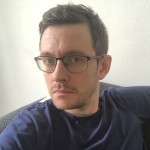
Julien G.
Juliena mechanical engineering graduate and specialist in climate engineering since 2009, has become a writer specializing in renewable energies, with expertise in heat pumps and photovoltaic solar panels for individual housing.
See all articles by this author

